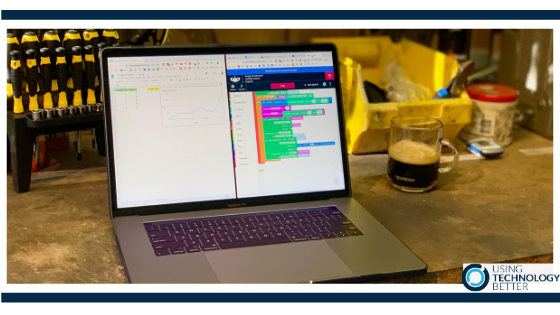This is the third blog in the series of using Workbench. Workbench provides the backbone to be able to combine a variety of applications and devices together and develop some coding to gather data and control external devices. In this third blog of a series of five, all linked to how-to videos, you will learn how to read and write data from a spreadsheet using the programming canvass.
[bctt tweet=”This blog post will show you how to read and write data from a spreadsheet using the programming canvass in Workbench #googleedu #workbenchedu” username=”adifrancis”]
Because we can read and write data via code, we are also able to collect data from external devices like a micro:bit. First, we need to understand how to use the programming canvass in Workbench to read and write data from a spreadsheet.
In this 8:18 minute video, you will learn how to write code using blocks in the programming canvass to read and write data from a spreadsheet. Click to watch the video.
Have you missed the first or second blog in the series? Don’t panic! Click here for the first blog and here for the second blog. Want to learn more? Then keep an eye out for the next blog where we develop the code further to incorporate loops or check out our online courses.











